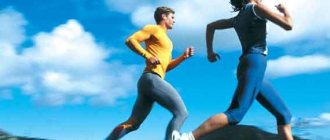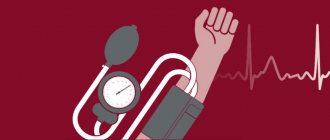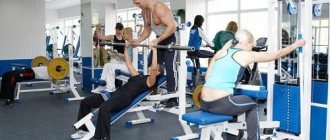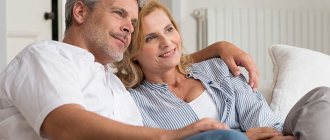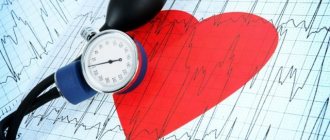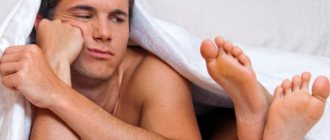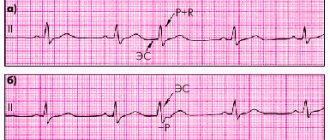What aggravates and develops pathology
Physical activity can be not only of a sporting nature, but also of an everyday nature. Factors influencing the development of pathology are the following:
- Carrying heavy objects, running and other high activity;
- Psycho-emotional overload and stressful situations;
- Abuse of coffee drinks, energy drinks, tea, alcohol, smoking;
- Pregnancy, hormonal changes at the onset of menopause, abortion and other situations that radically affect the restructuring of the female body;
- After a meal, especially when eating before bed;
- In case of overdose of cardiac glycosides.
Extrasystole and sports can be combined with the right approach. But since the reasons for the development of deviations are always very individual, consultation with a specialist is required before physical activity and subsequently.
Heart rate pattern after exercise
Extraordinary heart contractions after physical exercise can be different. Single (up to 5), multiple (over 5), volley (when several contractions occur in a row), paired (simultaneous) are also possible.
There are also different situations regarding the timing of the manifestation of pathology. There may be early, intercalary and late extrasystoles. In each of these cases, the reduction occurs at different periods. Ventricular extrasystoles are much more common than others.
If you have discomfort when playing sports
Often, clinical manifestations of the disease may be absent and visible only on a cardiogram. At the same time, it is after physical activity (even just after a protracted strong cough) that the pathology can clearly make itself felt - a feeling of increased heartbeat appears, which, however, calms down quite quickly.
In those people who, in addition to pathology, also have aggravating organic heart diseases or vegetative-vascular dystonia, the tolerance of extrasystoles is noticeably reduced, and the symptoms are more pronounced. Manifestations may be of the following nature:
- Feeling of a strong push inside and as if the heart is turning over;
- Interruptions in heart function and even freezing;
- Sharp short-term pain in the apex of the heart;
- Feeling of discomfort and mild prolonged pain in the heart;
- The neck veins may swell;
- Physically, loss of strength, pallor and increased sweating are possible;
- Shortness of breath and a feeling of heat may occur;
- Manifestations of anxiety and fear of death, lack of air;
- Frequent mood swings and irritability.
If, after playing sports or physical activity, extrasystoles become more frequent, dizziness may occur. The thing is that due to the high frequency of heart contractions, blood output decreases and this provokes the appearance of hypoxia, affecting the brain. In this case, if first aid is not promptly provided and the correct medication is not prescribed, then dizziness can develop into fainting.
Diagnosis of the disease
To diagnose the disease, general clinical and instrumental methods are used. First of all, complaints are carefully collected, this will help to establish when the extrasystoles first appeared, under what conditions certain symptoms occur, and what the child feels.
General examination and complaints
Children do not immediately begin to complain of discomfort in the heart area. Often, they first go to doctors of other specialties; children are examined by pediatric neurologists or gastroenterologists. A neurologist complains of dizziness, headaches, nocturnal enuresis, weather dependence, and a gastroenterologist examines him for biliary dyskinesia and gastrointestinal dyspepsia. And only after an ECG, these specialists send the child for a consultation with a cardiologist.
A general examination of the patient is carried out, with the obligatory monitoring of pulse and blood pressure.
Normally, the pulse wave corresponds to heart contractions, but with arrhythmia, a loss of beats is noted. Auscultation can be heard in pairs, the first is loud and clear, and the second is muffled. In addition, it is necessary to conduct a blood test for electrolytes and thyroid hormones. Rule out past infections that can cause heart complications.
A conversation with parents is required to rule out a hereditary predisposition to the disease.
Instrumental examination
You can instrumentally confirm or refute the presence of a disease in a child using an ECG. This pathology is determined by characteristic signs:
- the presence of premature heart contractions with a deformed QRS complex;
- absence of P waves;
- the appearance of drainage complexes;
- the presence of a complete compensatory pause after the ventricular extrasystole passes.
If necessary, an ECG is performed with stress. Children are asked to jump, squat, do push-ups, and walk up and down stairs.
Holter monitoring is a study that allows you to determine when ventricular extrasystole occurs during the day. The essence of the study is that the child is attached to a special monitor, with which he walks for 24 hours or more (the duration is indicated by the doctor).
Keeps a special diary. Based on the decoding results, it is possible to determine the circadian rhythm of the extrasystole (it occurred during the day or at night), detect life-threatening forms of arrhythmia, carry out differential diagnosis with other types of diseases, and evaluate the effectiveness of the treatment.
Children of any age undergo an echocardiographic examination, which helps to exclude various heart defects (congenital or acquired).
Is it possible to engage in physical activity?
In order to reliably determine whether a person can play sports with this pathology, a diagnosis must be carried out for each specific case. It is important to determine the frequency of extrasystoles, nature and daily mount. The diagnosis is based on the data obtained through diagnostics. Diagnostics may include:
- Carrying out a cardiogram;
- Listening to the heart;
- Ultrasound;
- Questioning the patient;
- A number of additional examinations and tests prescribed individually.
An ECG often fails to detect a disease if there are no abnormalities at the time of examination. In such a situation, a Holter mount will help you see a clearer picture. Only after an accurate diagnosis, treatment and under constant supervision by a doctor can we talk about playing sports with extrasystole.
What kind of lifestyle can have a positive effect
With extrasystole, it is extremely important to establish proper nutrition. Doctors definitely improve the well-being of those patients who include enough foods with potassium and magnesium in their diet. If there are no problems with your kidneys, you need to eat pumpkin, dried apricots, bananas, raisins, potatoes, nuts and prunes every day. It is also important to give up all kinds of drinks and drugs that have a stimulating effect on the nervous system.
Leading to overload of the nervous system, such drugs affect the intensification of attacks. First of all, we are talking about tea, coffee, alcoholic drinks and energy drinks. Additionally, it is important to limit the consumption of fatty foods high in animal fats. Spicy foods and sweets also aggravate heart disease. It is necessary to monitor your emotional state, avoid stress, get enough sleep, and normalize your body weight. It is necessary to engage in physical activity in any case, but it is better to avoid heavy loads. Frequent and regular walks in the fresh air are best.
Nutrition
Treatment of most diseases involves following a diet. For extrasystoles, there is also a list of foods that can be consumed and those that are prohibited.
| Healthy to eat: |
|
| The following products are prohibited during extrasystoles: |
|
Is it possible to play sports with extrasystole?
Extrasystole is quite often detected in people of different ages. Various studies confirm the presence of extraordinary contractions in almost every person, only their frequency and severity are different. The presence of concomitant diseases is also important, which in some cases can significantly worsen the patient’s well-being.
In a normal state, an adult has approximately 30-40 extrasystoles per hour. If a greater number of extraordinary contractions is observed, then the patient’s condition is assessed for other diseases of the cardiovascular system.
Extrasystole is determined using electrocardiography. If necessary, 24-hour ECG monitoring is used, and an ultrasound of the heart is required, as this makes it possible to clarify the functionality of the myocardium and exclude organic lesions.
Video How to exercise after a heart attack or with heart disease?
During pregnancy
Both supraventricular and ventricular extrasystole can be diagnosed during pregnancy. As a rule, this is not a contraindication to childbirth.
In the absence of other cardiovascular disorders, creating a calm environment is sufficient to restore heart rhythm.
In addition to studying the mother’s heart rhythm, it is possible to detect extrasystoles in the fetus. Arrhythmias in the fetus are a fairly common disorder.
As for indicators, a deviation is the occurrence of extrasystole more often than once every 10 beats.
Factors inducing the development of extrasystole in athletes
There are a number of factors predisposing to extrasystole, among which the following options are most often identified:
- emotional stress;
- disorder of autonomic regulation of cardiac activity;
- neuro-reflex influence;
- neurohumoral pathological changes;
- electrolyte imbalance in the body;
- extracardiac factors.
A chronic focus of infection is of great importance in the development of extrasystoles in athletes. This could be long-term untreated dental caries, long-standing sore throat, chronic pyelonephritis or bronchitis.
Extrasystole may be the only symptom that indicates mild coronary heart disease. Myocardial dystrophy, focal myocarditis and other diseases of the cardiovascular system can also occur latently.
When can you play sports with extrasystole?
Not in all cases it is possible to play football during extrasystole. To assess the patient's condition, specially compiled gradations of extrasystole are used, based on the frequency of occurrence of extraordinary contractions.
- 1 – no more than 30 ECS occur in one hour, or no more than one in one minute.
- 2 – more than 30 ECS are recorded in one hour or more than 1 per minute.
- 3 – polymorphic ECS, which are ECS complexes of different shapes, determined on an ECG.
- 4 – salvo and paired ECS, which appear on the ECG as two or more complexes of extraordinary contractions following each other.
- 5 – early EX.
According to the presented analysis, permission for training and physical exercise is issued when the extrasystole of the first two gradations is determined. When ECS is detected at subsequent gradations, it is either unacceptable to play sports at all, or in moderation. This same assessment of the patient’s condition is the answer to the question of whether it is possible to run with extrasystole. As for the sauna, fitness and extrasystole, the situation is similar. Doctors recommend performing fitness exercises or staying in a sauna only in cases where there is no increase in extrasystoles.
Similar articles
An important type of arrhythmia for diagnosis, in which untimely contraction of the ventricles is observed. The signal for extraordinary depolarization comes from an additional (ectopic) focus of excitation. To prevent the development of serious complications, it is necessary to carry out timely treatment of ventricular extrasystole.
The rhythm of cardiac activity, in which periodically untimely contractions of the entire heart or its individual chambers occur. Found in 70% of people. Without clinical manifestations, it does not require specific treatment. In other cases, it is preceded by the appearance of paroxysms that cause an attack of abnormal heart activity. Then it manifests itself as symptoms of the underlying disease.
In many cases, the development of severe heart disease can be prevented through exercise. Most leading experts in the field of cardiology believe that heart training should be an integral part of a healthy lifestyle. At the same time, doctors prescribe specific exercises even to patients suffering from cardiopathology.
2 comments on ““Is it possible to play sports with extrasystole””
Hello, I have a question, I accidentally found out that I have extraestalia and I play sports. An ultrasound cardiologist put me on a holter for 1 day and saw that there were almost 4,000 times more strokes of extraestalia, please advise what they are doing, should I play sports or not? Thank you for earlier
Timur, it is believed that the number of extrasystoles more than 1200 per day indicates a health hazard. In such cases, treatment is carried out, and physical activity should be performed only in a light form.
Add a comment Cancel reply
Cervical dystonia (CD) is a neurological disorder that causes abnormal contraction of the neck muscles.
The atherogenic coefficient (AC) is calculated using certain cholesterol fractions in a blood test.
Infectious pericarditis (IP) is an inflammation of infectious origin of the serous membrane, which consists of visceral and parietal layers and surrounds the heart.
Leukopenia (low levels of white blood cells or white blood cells) means that there are too few white blood cells circulating in the blood.
Ascorbic acid (vitamin C) is a water-soluble vitamin that is found in many foods, but is most abundant in citrus fruits.
© 2020. Arrhythmia Center!!
Please note that the information presented on the site is for informational and educational purposes only and is not intended for self-diagnosis or self-medication. The selection and prescription of medications, treatment methods, as well as monitoring their use can only be carried out by the attending physician. Be sure to consult a specialist.
Forecast: is it worth worrying about?
If a cardiologist has announced that your child has extrasystole, I advise you not to panic, but to clarify the cause of the disturbances with your doctor and discuss further tactics. Recovery will most likely not occur. Sometimes extrasystoles spontaneously disappear and do not appear for several years, and then suddenly appear again on the ECG.
Ventricular extrasystoles in the absence of clinical manifestations are not an obstacle to exercise in the sports section. If you follow medical recommendations, the patient can lead an active lifestyle and maintain full working capacity for many years.
The following sources of information were used to prepare the material.
Features of the occurrence of extrasystole in athletes
First you need to find out what extrasystole is. The name comes from the concept of “extrasystole,” which denotes the untimeliness of heart contractions, which are caused by impulses that occur prematurely. Impulses are generated in the sinus node of the right atrium, but in case of rhythm disturbances they arise in other parts of the heart - the atrium, ventricles, and atrioventricular region. To put it simply, extrasystole is a type of arrhythmia.
Why does the disease occur in athletes? It would seem a paradox, since for the normal functioning of the cardiovascular system, on the contrary, active physical activity is recommended. But in reality, training should be moderate. If an athlete’s intensity is prohibitive, then the number of heart contractions increases significantly, exceeding the permissible norm. In such cases, the heart muscle does not have time to relax between accelerated contractions, which is why interruptions occur.
This happens in this way: the heart must alternately contract and relax, but with significant physical exertion it can only contract as tension increases. Consequently, there are no seconds left to relax.
The heart automatically begins to work in a static-dynamic mode, that is, without the relaxing effect of the functioning muscles. During such overexertion, blood supply deteriorates, since when contracting, blood enters the heart, and when relaxing, it retreats. Therefore, hypoxia begins to develop, during which oxygen starvation occurs.
After cells stop receiving oxygen, and with it nutrients, anaerobic glycolysis occurs, in which lactic acid is formed. This leads to oxidation processes with hydrogen ions.
Too frequent intense workouts develop further cell necrosis, that is, their death, which can result in a micro-infarction, heart failure, or stroke. If you stop physical activity, the myocardiocytes are restored, if you continue, they die further without the ability to regenerate.
Such cells are transformed into connective tissues that cannot be stretched. Consequently, they will not be able to contract and transmit electrical impulses. This condition is called “athletic heart”. Speaking in medical terms, this is dystrophy of the heart muscle (myocardium).
Find out in more detail about what characterizes a sports heart from this video:
Causes
The violation in question may be functional, in other words, causeless. The organic type of arrhythmia occurs against the background of changes in the myocardium, stretching of the walls, dilatation of the cavity, rheumatic and sclerotic disorders, etc.
Most often, athletes experience causeless arrhythmia, but as excessively heavy loads continue, it goes into the stage of organic damage.
There are also factors that contribute to the development of extrasystole:
- frequent psycho-emotional outbursts;
- disorders of the reflex and autonomic nervous system;
- abuse of caffeinated drinks;
- electrolyte imbalance;
- neurohumoral lesions.
How it manifests itself:
- cardiopalmus;
- internal tremors in the heart area;
- heart sinking;
- pain and discomfort in the sternum;
- swelling of the veins in the neck;
- paleness of the skin;
- excessive sweating;
- severe weakness;
- dyspnea;
- anxiety;
- dizziness;
- fainting.
Causes of arrhythmia after sports
A low pulse (bradycardia) in trained athletes is not a pathological condition; in some it can drop to 30 beats per minute, without leading to disruption of the blood supply to the organs, as it is compensated by a large cardiac output.
The main rhythm disturbances after sports training manifest themselves in the following forms:
- Respiratory sinus arrhythmia due to increased tone of the parasympathetic nervous system: when inhaling, the pulse quickens, when exhaling it slows down. Extrasystoles are associated with overstretching of the cavities of the heart and lack of oxygen during high physical activity.
Such arrhythmias do not need correction and disappear without a trace after rest. In untrained people, shortness of breath and rapid pulse may be signs of insufficient heart function, so if discomfort occurs, and especially pain in the heart after physical activity, you should consult a cardiologist.
Sports activities can be recommended by a cardiologist in case of heart rhythm disturbances, but provided that the reasons for their development in the form of organic changes in the myocardium are excluded. Strength exercises and high-intensity training are not recommended for patients with arrhythmia.
For those who suspect they have heart rhythm problems, it is useful to know the causes and symptoms of atrial fibrillation. Why does it occur and develop in men and women? What are the differences between paroxysmal and idiopathic atrial fibrillation?
Doing exercises for the heart is useful both for healthy people and for those with organ disease. This can be minor physical activity, breathing exercises, to improve the health of the main muscle. It is advisable to conduct training daily.
Simple breathing exercises for the heart can work wonders. It will help with tachycardia, arrhythmia, aneurysm, to restore and strengthen the walls of blood vessels after surgery. What to do?
Options for how to strengthen the heart depend mainly on its condition. They also affect blood vessels and nerves. For example, in old age, exercise will support the heart muscle. After a heart attack, folk remedies can be prescribed for arrhythmia.
Sometimes arrhythmia and bradycardia occur simultaneously. Or arrhythmia (including atrial fibrillation) against the background of bradycardia, with a tendency towards it. What medications and antiarrhythmics should I take? How is the treatment carried out?
In some cases, exercises for arrhythmias can help control rhythm disturbances. This can be physical exercise, breathing, Nordic walking and running. Complete treatment of arrhythmia without a set of exercises is extremely rarely carried out. What complex should be done?
Because of training, an athlete's heart is different from that of an ordinary person. For example, by stroke volume, rhythm. However, a former athlete or when taking stimulants may develop diseases - arrhythmia, bradycardia, hypertrophy. To prevent this, you should take special vitamins and medications.
For most patients, cardio training for the heart is simply necessary. Any cardiologist will confirm their benefits, and most strengthening exercises can be done at home. If your heart hurts after exercise, it means something is not being done correctly. Caution is required after surgery.
The diagnosis of bradycardia and sports may well coexist. However, it is better to check with a cardiologist about whether it is possible to play sports, which exercises are best, and whether running is acceptable for adults and children.
Sources:
http://www. scalpil. ru/kardiologiya/2393-zanyatiya-sportom-pri-serdechnoy-aritmii. html
http://cardiobook. ru/fizicheskie-nagruzki-pri-aritmii/
Source: imedic.club
Is it possible to play sports with extrasystole?
To determine the ability to play sports, it is necessary to undergo a comprehensive examination to identify the type of extrasystole, the degree of damage, the stage of severity and the presence of complications and concomitant pathologies. The disease comes in 3 main types:
- The atrial type is characterized by extraordinary impulses that are generated in the atrium. Indicates diseases such as pericarditis, ischemia, defect, hypertension.
- Atrioventricular form - impulses arise in the nodes that are located between the ventricles and the atrium.
- Ventricular view - generation of impulses occurs in the ventricles. This is the most dangerous form, as it precedes serious pathological disorders of the cardiovascular system. The main complication is fibrillation.
According to the nature of heart contractions after sports, extrasystole can be divided into the following types:
- single – up to 5 extraordinary contractions per minute;
- multiple – from 6 contractions and above;
- salvo - several contractions in a row;
- paired - simultaneous extraordinary contractions.
Today, there is a specially compiled gradation of heartbeats , which doctors are guided by when issuing permission to play sports:
- The number of contractions per minute reaches one.
- Heart rate per second – maximum 5.
- Polymorphic form, in which different extrasystoles are present.
- Pair and salvo view.
- Early extrasystole.
FAQ
What is the norm per day
Extrasystole is one of the most common diseases. However, a significant proportion of patients do not even realize that they have such a disorder. Normally, the number of contractions is 30-40. If this indicator is exceeded, polymorphic extrasystoles are diagnosed; if the indicator is exceeded by 50 impulses, we are talking about tachycardia.
There is no need for treatment if attacks occur infrequently and do not cause discomfort. The same applies to seizures after RFA. However, it is still recommended to pay attention to your lifestyle and eliminate risk factors. It is especially important to give up bad habits and stick to the basics of proper nutrition.
Symptoms of extrasystole often occur in girls during menstruation. This is also not a cause for concern, but just the body’s reaction to changes in hormonal levels. At this time, experts recommend that women consume foods containing potassium and magnesium.
Treatment is necessary in cases where attacks of extrasystole occur with regular frequency and affect a person’s well-being. In such cases, medications are prescribed to restore normal heartbeat and eliminate existing symptoms.
There are cases when diagnostic measures do not reveal any abnormalities, but the patient complains of periodic stopping of the heart muscle. In such cases, it is necessary to check the functioning of not only the cardiovascular system, but also the thyroid gland, since extrasystole can be caused by excessive production of hormones by the thyroid gland.
If everything is fine with the endocrine system, then it is recommended to check the spine, as there may be a pinched nerve.
Is it possible to play sports
In order to determine whether it is possible to play sports and what physical activity is permissible in each specific case, it is necessary to conduct daily monitoring and determine the nature and frequency of extrasystole.
Source: serdce.hvatit-bolet.ru
Related questions:
| date | Question | Status |
| 23.11.2017 | ECG results Hello. I am 25 years old, can you please evaluate the results. I’m not seeing the cardiologist until October 30th, but I’d like to know your opinion on the ECG results. Ps: in general, the diagnosis is long QT, but over 3-5 years, out of 10-20 cardiograms, Holters, a deviation was found on Holter alone in 2012. I always feel normal, I don’t complain about my heart, but in April 2020, my routine went wrong, I had poor sleep, had an inactive lifestyle, and then I began to notice interruptions in my heart, or rather, they looked like missed beats or, on the contrary, too much... | 1 REPLY |
| 26.08.2012 | Help me decipher the ultrasound report My daughter is 9 years old, she had an ultrasound of her heart, the conclusion was as follows: Ectopic attachment of the chordae of the spinal cord with POP regurgitation. On the TC, regurgitation is stage 1. Additional trabecula in the LV cavity. On the LA table, regurtion 1 tbsp. FV-71.2%. Please comment on our diagnosis. Is it possible to play sports with this diagnosis? Thank you very much | 1 REPLY |
| 23.10.2015 | Constant pulsation in the head and a feeling of not having a fresh head Good afternoon. The feeling of not having a fresh head has been bothering me for about 10 years; it began after chronic lack of sleep. I visited many neurologists, prescribed various vascular drugs (Cortexin, Actovegin, etc.), and also tried drugs for ICP (Diakarb.), antidepressants (Phenibut, Adaptol, etc.). She also took courses in manual therapy, reflexology, and hirudotherapy. Not a single treatment helped. It doesn’t hurt like with vasospasm, but it’s very strange, it’s even difficult to explain how. It’s as if the whole head is in memory... | 1 REPLY |
| 24.12.2016 | Bicuspid aortic valve Hello. My 13-year-old son never complained about his heart. For classes in the section, an ultrasound of the heart was performed, results: PQ 0. 16 minus rhythm with heart rate 100 per minute EOS vertical. CDR LV43 mm. IVS 11 mm. ZSLZh 8 mm. EF 70% Ao 27 mm ascending Ao 26 mm LA 27 mm RV 17 mm st RV 3 mm. FC AC 20 mm AC adhesion along the commissures of the ACL and LCL functionally 2nd leaflet insufficiency 1st degree V on AC 1.0 m. S. V on class LA 1 m. S In the abdominal Ao main blood flow V in the descending Ao 1.5 m. S TK, MK, class LA without... | 0 ANSWERS |
| 10.02.2016 | After an ultrasound of the heart, the child was diagnosed with extrasystole. How to treat and is it possible to play sports? Good afternoon My son is 6 years old. Before school, they recommended doing an ultrasound and ECG of the heart. Based on their results, a diagnosis of extrasystole was made. In the fall, we started playing sports - sambo (or rather, general physical training with elements of sambo). Can we now visit this section with this diagnosis and how to treat this disease. I am attaching scans of the ultrasound and ECG results. Thank you in advance! | 0 ANSWERS |
Source: SprosiDoktora.ru
Possible consequences
If you continue to engage in intense training in the presence of extrasystole, irreversible processes occur in the cardiovascular system. Accordingly, if the disease is organic in nature. The following consequences arise:
- coronary vascular atherosclerosis;
- atrial flutter;
- atrial fibrillation;
- paroxysmal tachycardia;
- ventricular fibrillation;
- ventricular fibrillation;
- myocarditis;
- stroke and myocardial infarction;
- heart failure;
- cardiac arrest and death.
If you find at least a few signs of extrasystole, before continuing to train, be sure to visit a therapist and then a cardiologist. You urgently need to undergo examination and begin timely treatment. Only in this case will the sport be shown to you.
Drugs and doses for antiarrhythmic therapy in children with ventricular extrasystoles
If extrasystole occurs against the background of heart disease, the prognosis is always worse. In athletes, organic extrasystole is caused by purely sports changes - uniform compensatory hypertrophy of the heart, dilatation of the cavities, and over time - degenerative changes. In such cases, extrasystole is the first sign of deterioration in heart function.
Over time, the arrhythmia will only intensify, and the same running during extrasystole can simply kill the athlete. If a functional extrasystole appears after exercise, then the organic one accompanies the athlete at rest, sometimes even in sleep, like a vagal extrasystole. For an athlete who has dilatation cavities or cardiosclerosis, extrasystole occurs, it is best to end your professional career and reduce the intensity of the load several times. Such diseases, unfortunately, only progress over time, leading to severe, sometimes fatal, complications.
Propranolol (Inderal, Anaprilin, Obzidan), non-selective beta-blocker (class II antiarrhythmic drugs). Daily dose - 1-4 mg/kg/day. (2-4 times a day). Atenolol, a long-acting cardioselective beta1-blocker (class II). Daily dose - 0.5-2 mg/kg/day (1-2 times a day). Propafenone (ritmonorm, propanorm), sodium channel blocker (class 1C). The daily dose is 7-15 mg/kg/day. (3 times a day). Allapinin (1C class). Daily dose - 1 mg/kg/day. (3 times a day). Verapamil (isoptin), a slow calcium channel blocker (class IV). Daily dose - 3-7 mg/kg/day. (2-3 times a day). Amiodarone, potassium channel blocker (class III). Daily dose: saturation dose - 10 mg/kg/day. (2 times a day) - 10 days, maintenance dose - 5 mg/kg/day. Sotalol (sotalex) (III class). The daily dose is 1-4 mg/kg/day. (2 times a day).
If you continue to engage in intense training in the presence of extrasystole, irreversible processes occur in the cardiovascular system. Accordingly, if the disease is organic in nature. The following consequences arise:
- coronary vascular atherosclerosis;
- atrial flutter;
- atrial fibrillation;
- paroxysmal tachycardia;
- ventricular fibrillation;
- ventricular fibrillation;
- myocarditis;
- stroke and myocardial infarction;
- heart failure;
- cardiac arrest and death.
If you find at least a few signs of extrasystole, before continuing to train, be sure to visit a therapist and then a cardiologist. You urgently need to undergo examination and begin timely treatment. Only in this case will the sport be shown to you.
https://serdce.biz/zabolevaniya/aritmii/ehkstrasistoliya/sport-i-ehkstrasistoliya.html
You need to know how to train correctly. This is especially true for all older fans of cyclic sports who practice independently and end up quite often encountering arrhythmia, this is at best - at worst, it is a heart attack or even death. There are many such examples. The heart can only be expanded or stretched. This primarily applies to fans of cyclic sports - runners, skiers, cyclists.
This is not necessary for strength sports. For example, to increase heart volume by 20%, you need to train at least 3-4 times a week for 2 hours (at a heart rate of 120-130 beats/min, at which maximum stroke volume is achieved). If you need to increase 50-60%, then you need to train 2 times a day for 2 hours, at least 3-4 days a week.
Due to prolonged filling, the heart gradually increases in size, thereby increasing the total amount of blood (and oxygen) that it can pump during contraction. And the more oxygen the heart becomes able to deliver to working muscles at a time, the less the total number of contractions becomes.
Usually former athletes. These are people with already established arrhythmia, one of the reasons for which is heavy physical activity. Therefore, all former athletes are recommended to train the heart at a pulse at which the heart is maximally deformed. In other words, the heart begins to pump the maximum volume of blood through itself without acidification.
This is what Professor V.N. Seluyanov says. Any aerobic exercise for former athletes provides significant positive results. The fact is that many athletes have hearts with significant myocardial hypertrophy, conduction disturbances, and impaired blood supply to certain areas of the myocardium. The athlete's heart is characterized by rhythm disturbances at rest and during work.
This phenomenon intensifies with illness - intoxication of the body or with prolonged cessation of physical exercise. Regular aerobic training activates the activity of all heart cells, which leads to increased metabolism and temporary normalization of plastic and metabolic processes in the heart.
- Carrying out a cardiogram;
- Listening to the heart;
- Ultrasound;
- Questioning the patient;
- A number of additional examinations and tests prescribed individually.
An ECG often fails to detect a disease if there are no abnormalities at the time of examination. In such a situation, a Holter mount will help you see a clearer picture. Only after an accurate diagnosis, treatment and under constant supervision by a doctor can we talk about playing sports with extrasystole.
Dear Eduard Romanovich! I have already turned to you for advice, you always give such valuable advice, after which life becomes better! Please help me understand the current situation once again. For 6 years I have been worried about extrasystoles. But all this time they were rare, about 5 pieces per day, I tolerated the load well, went to the gym last year.
About three weeks ago the situation worsened greatly; frequent extrasystole appeared during normal household activities. As soon as I walk down the street for about 5 minutes or climb the stairs to the 4th floor, interruptions begin (about once a minute). To be honest, I became scared, and I decided to undergo an examination. The day before yesterday I had an echocardiogram. Result.
The walls of the aorta are not changed. The cardiac cavities are within normal limits. Valvular apparatus: 1st degree MV prolapse with 1st degree regurgitation, 0-1st degree tricuspid regurgitation, 0-1st degree pulmonary regurgitation, without signs of pulmonary hypertension. Systolic and diastolic functions are not impaired. EF - 76%.
Today I did a treadmill test on a treadmill. The test was stopped at the 2nd minute of the 4th load step (125 IU) when the heart rate reached 131 beats. per minute (77% of the calculated submaximal heart rate of 170 beats.min) against the background of the appearance of frequent PVCs, incl. couplets. No diagnostically significant ST segment displacement was detected. Maximum art.
pressure 140/80 at 2 minutes at a load of 125 W. The recovery period was uneventful. The doctor stopped the exercise due to the onset of paired extrasystoles and was afraid that ventricular febrillation might occur. She recommended contacting a cardiologist to prescribe treatment or the possibility of performing RFA.
Eduard Romanovich, please tell me, is everything really that bad? I was so upset after the appointment, I left the clinic and sat in the car crying. I, of course, understand that the occurrence of extrasystole during exercise is not a good sign, especially when it is complicated by couplets. In fact, this worried me.
It turns out that even everyday stress is contraindicated for me? And do I understand correctly that I can forget about a possible pregnancy and never think about it again? One of these days I’ll try to get a halter fitted. But, because I feel every extrasystole, I can say that there are approximately 20-40 of them per day, they occur mainly when walking.
About 4 years ago, on the holter, out of 3 VES, one pair was noted, not related to the load. And, if it matters, I am 170 cm tall and weigh 62.5 kg. I don't smoke or drink. Thyroid hormones are all normal. The work is mostly sedentary, on my feet for several hours a week, and then all day long at the computer.
Conducting system of the heart However, there are types of arrhythmia for which there are contraindications to playing sports. These include: These rhythm disturbances are especially dangerous against the background of a previous myocardial infarction, aneurysm of the heart and blood vessels, valve defects or septal defects, heart failure, starting from stage 2B, arterial hypertension and severe concomitant diseases of the kidneys, liver, diabetes mellitus. And here Learn more about the treatment of atrial fibrillation.
Diagnostic tests. These include:
- ECG in monitoring mode; stress test on a treadmill or bicycle ergometer; Ultrasound and echocardiography of the heart (if indicated).
Using these methods, it is possible to determine the possible level of loads and their tolerance, the maximum heart rate at which you can train, and the risk of complications. If the patient has not previously played sports, then exercise should begin with walking with a gradual increase in duration and pace.
- walking; physiotherapy; yoga; Pilates; swimming.
In the future, when the condition normalizes and in agreement with the attending physician, light running, cycling, dancing, and sports games can be added.
This pathology is characterized by chaotic and frequent contraction of muscle fibers, which can cause such a serious condition as ventricular fibrillation with a fatal outcome. Therefore, the level of permissible physical activity for various forms of arrhythmia may differ significantly.
Recommendations for patients with sinus arrhythmia usually allow the choice of sport according to individual preferences, since in many cases this is the norm in children and adolescents. Disturbances in the electrolyte composition of the blood, changes in the level of sex hormones, vegetative-vascular dystonia and neuroses that cause such rhythm disturbances are easily corrected and do not cause significant complications.
What is extrasystole
Mechanism of heart contraction
The function of the regulator of the number of heart contractions is performed by the conduction system of the heart, which consists of the following elements and structures:
- sinoatrial (sinoatrial) node;
- muscle tracts;
- internodal atria;
- atrioventricular node;
- atrioventricular bundle.
The impulse that excites cardiac contraction begins from the sinoatrial node. Then the excitation is transmitted along the internodal pathways of the atria, provoking their depolarization, approaches the atrioventricular node and is transmitted through the atrioventricular bundle to the muscles of the ventricles. At the slightest failure of the impulse strength in any part of the conduction system, episodic or organic disruptions of the heart rhythm (extrasystoles) may occur.
Extrasystole disease
Extrasystoles (extrasystoles) are atypical depolarization and premature contractions of the heart or its individual chambers. As a rule, patients diagnosed with extrasystole experience a short-term freezing of the heart rate, lack of air and an intense cardiac impulse. Such abnormal heartbeats and pauses between contractions provoke an impulse outside the cardiac sinus node.
Differential and etiological diagnosis of extrasystole is difficult in cases where heart rhythm disturbances are a side effect of another cardiovascular disease. When extrasystole occurs, it is imperative to undergo a full diagnosis and evaluate the functional state of the myocardium.
Types of extrasystoles
Premature heart contractions (complexes) according to the mechanism of occurrence are: parasystoles and extrasystoles. The differences between the types are clearly visible on daily ECG monitoring.
In cardiology there are:
1. Functional extrasystoles. Diagnosed in people with signs of neurosis or autonomic dysfunction. Such extrasystoles are recorded at rest; during emotional outbursts or after physical activity, atypical complexes cease. With a functional malfunction of the heart rhythm, patients may feel extrasystoles: tremors behind the sternum, hot flashes, anxiety, discomfort and lack of air. In most cases, the development of functional extrasystoles is benign. Gastric monotopic changes are recorded on the ECG.
2. Organic extrasystoles. Typical for elderly patients. As a rule, organic extrasystoles accompany endocrine disorders, heart disease, and chronic intoxication. Subtle signs of premature heart beats occur after stress or exercise. Such complexes do not prevent patients from leading an active lifestyle. Cardiac contractions of high gradations are organic in 95% of cases. In this case, ventricular, polytopic, atrial, atrioventricular and group extrasystoles are recorded on the ECG.
Bigeminy
Bigeminy in cardiology refers to a certain type of supraventricular (supraventricular) or ventricular extrasystole. This type of arrhythmia develops due to dysfunction of the autonomic and central nervous system. The main cause of bigeminy is organic changes in the heart muscle. Even small deviations in the myocardium with extracardiac origin and associated factors provoke the appearance of an ectopic focus of excitation.
Ventricular bigeminy is characterized by uniform alternations of a normally occurring contraction with a single ventricular extrasystole, which is a type of allorhythmia. Untimely excitation of the right cardiac ventricle is also recorded. Supraventricular bigeminy is a paired alternation of one rhythmic contraction and one extrasystole.
The diagnosis of “bigeminy” is common in rheumatic heart defects (mitral valve prolapse and aortic stenosis). The disease often accompanies cardiomyopathies, myocarditis and thyrotoxicosis.
Classification of extrasystoles
Depending on the area of localization and ectopic foci of excitation, extrasystoles are distinguished:
- Atrial.
- Ventricular
- Atrioventricular and nodal (atrioventricular).
- Sinoatrial (sinus extrasystole).
Extrasystole can have one or more sources of excitation. The following types of extrasystoles are diagnosed:
- Monotopic - with one focus of development and a stable interval in areas of the cardiogram.
- Polytopic - several centers of occurrence and different intervals of linkage.
- Unstable paroxysmal tachycardia is a series of extrasystoles following each other.
Today, several classification systems for arrhythmias are used in medicine. The most common modified version of the “Lown & Wolf” gradation offers the following classification of ventricular extrasystoles:
- I-class – single extrasystoles with repetition less than 30 units/hour. This arrhythmia is not life-threatening and does not require correction.
- Class II – single extrasystoles with repetition over 30 units/hour. Minor deviations from the normal heart rate do not lead to serious consequences.
- Class III – polymorphic extrasystoles. Cardiac complexes of various shapes with a large number of episodes require therapeutic correction.
- IVa-class - paired extrasystoles following each other. High grade class with pathological consequences.
- IVv-class – volley extrasystoles (3-5 in a row). High grade class with irreversible consequences, posing a danger to life.
- V-class – early extrasystoles (R, T). A high grade class that leads to cardiac arrest.
Is it necessary to further examine the child and how to do it?
Often the pathology is asymptomatic. But sometimes your son or daughter may complain of a sinking feeling inside the chest, sudden sharp pain in the chest, temporary cardiac arrest, and then a sharp blow against the chest wall. It should be understood that the baby cannot always express complaints. One day, a five-year-old boy, pointing to his chest, described his condition to me this way: “There is a ball there, and it sometimes bounces painfully.”
In adolescents, extrasystoles are sometimes accompanied by dizziness, weakness, and a feeling of lack of air. The mother of a child in his first year of life may notice periodic bouts of anxiety, poor sleep, and breast refusal.
ECG changes
It is necessary to further examine a child with suspected or accidentally detected extrasystole in order to exclude organic heart pathology and decide on further tactics. The main diagnostic method is electrocardiographic examination. It is carried out at rest and after physical activity. The film may contain one extrasystole or several.
Depending on the location of the source of excitation, extrasystoles are distinguished:
- supraventricular;
- ventricular;
- atrioventricular (atrioventricular).
I advise you to definitely conduct Holter monitoring for your child - recording an ECG throughout the day with a portable device. At this time, let the baby lead a normal life. Such an examination will allow:
- determine the circadian rhythm of extrasystole (depending on the time of day);
- identify the connection between the appearance of pathological foci of excitation and physical activity;
- assess the incidence of extrasystoles.
Do not be surprised if the doctor prescribes Holter monitoring for your child in the absence of extrasystoles. Perhaps this particular method will help “catch” a premature contraction that could not be recorded on a regular electrocardiogram.
Additional examinations
It is important to find out the cause of the non-physiological impulse. Clinical recommendations for the management of children with ventricular extrasystoles, approved by the Association of Pediatric Cardiologists and the Union of Pediatricians of Russia, suggest performing the following auxiliary examinations:
- biochemical blood test - will exclude myocarditis and possible electrolyte imbalance;
- determination of thyroid hormones - if hypo- or hyperthyroidism is suspected;
- echocardiography – will make it possible to assess structural changes in the heart, the condition of the myocardium, and the size of the chambers;
- magnetic resonance imaging of the heart - recommended for suspected arrhythmogenic dysplasia of the right ventricle.
To clarify the diagnosis, a pediatric cardiologist can refer a small patient to transesophageal electrocardiography, electroencephalographic examination, consultation with a geneticist or other specialized specialists.
Causes of extrasystole
Extrasystoles are the most common subtype of arrhythmia, which periodically occurs in 65% of absolutely healthy people. With a normal heart rhythm there should be about 200 ventricular and 200 supraventricular extrasystoles per day. At moments of failure, up to tens of thousands of extrasystoles are recorded.
The nature of extrasystole can be organic (there are cardiac pathologies) or neurogenic (functional). Functional extrasystole develops when:
- Stress.
- Neuroses.
- Taking medications.
- Cervical osteochondrosis.
- Neurocirculatory dystonia.
- Intense physical activity.
- Abuse of nicotine, alcohol, caffeine-containing drinks.
An episodic increase in the number of daily extrasystoles does not pose a danger to healthy people; such surges in medicine are called “cosmetic arrhythmias.” Heart rhythm disturbances must be monitored and corrected in patients with organic heart pathologies.
{SOURCE}
Treatment
In this case, therapy is aimed at eliminating the root cause of the arrhythmia and eliminating the symptoms of the rhythm disorder itself.
Antiarrhythmic drugs are used to restore normal myocardial function. The downside is that the effects are only felt while taking these medications.
In cases where extrasystoles are caused by organic lesions, improper blood circulation in the coronary arteries, drugs are used whose action is aimed at dilating blood vessels.
In case of physical or emotional stress, the patient requires rest and sedatives. Patients should stop smoking and drinking alcohol.
For patients in whom extrasystole develops against the background of heart disease, preventive measures to prevent the occurrence of complications are extremely important.
